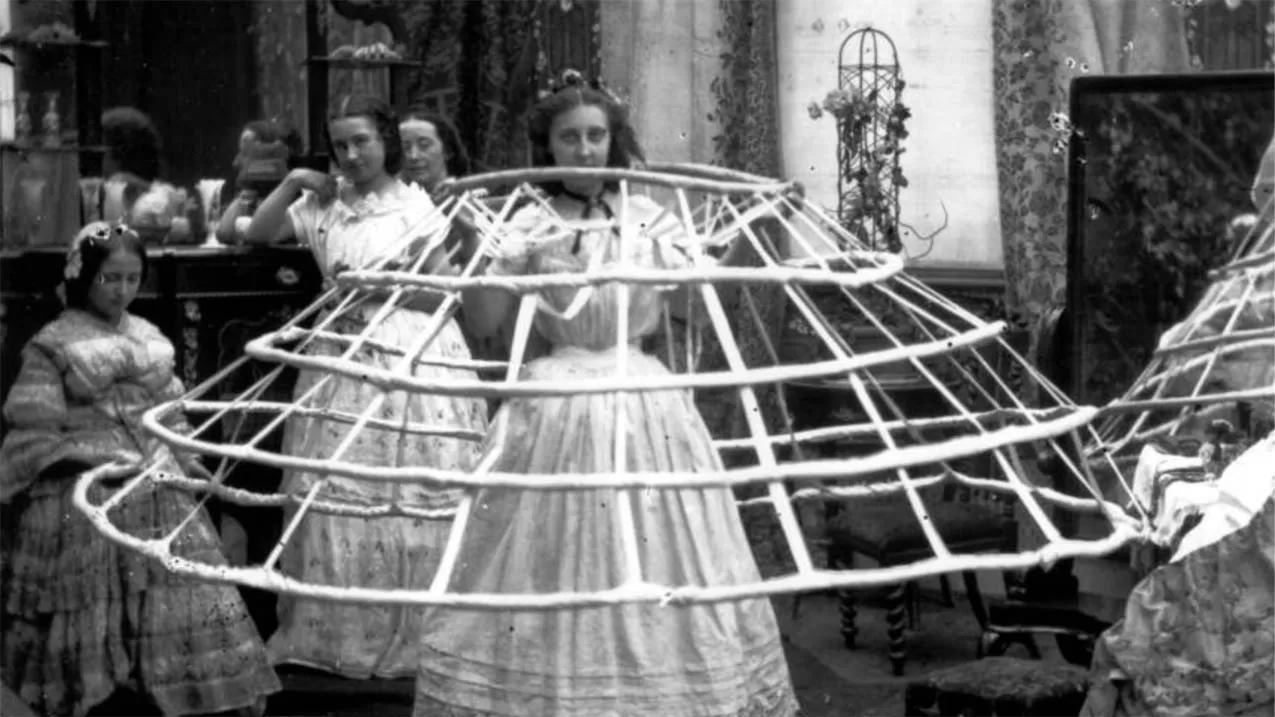We’ve all heard the phrase “beauty is pain,” which actually comes from the old French saying, “Il faut souffrir pour être belle”—you must suffer to be beautiful.
But just how painful can beauty be? And how much is one willing to suffer for it? Let’s find out.
Welcome to our series “beauty is pain,” where we delve into beauty and fashion horror stories from history, examining the extreme lengths people would go to in the name of beauty and fashion.
Read the story below, or watch the video here.
A Revolutionary Era for Fashion
Today’s fashion horror story takes us back to the mid to late 1800s. An era also known as the Victorian Era.
The Victorian Era was a time to be alive when it came to fashion. It was characterized by dramatic shapes, high necklines, layers upon layers, bold colors, and immaculate attention to detail.
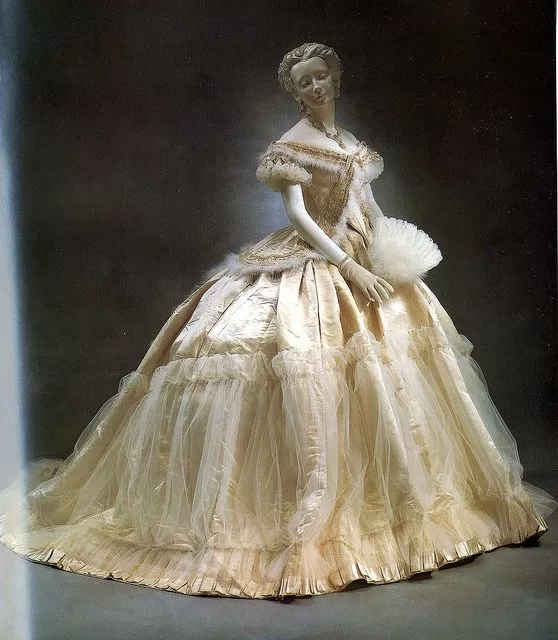
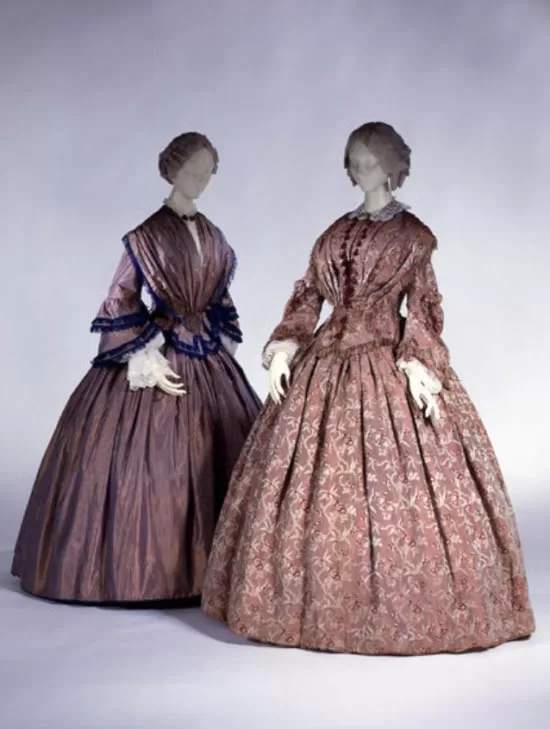
But before the Victorian era, these styles were so time-consuming and, therefore, expensive to produce and purchase that they were typically only worn by the aristocracy because people of lower classes just could not afford them.
However, as a result of the Industrial Revolution, which took place from 1760 to 1840, technological advancements led to tons of new machinery. Including one machine that forever changed the future of fashion–the sewing machine, which had only been invented 8 years prior to the beginning of the era in 1829 (there is much speculation about when the machine was invented, but many consider this year to be its birth year).
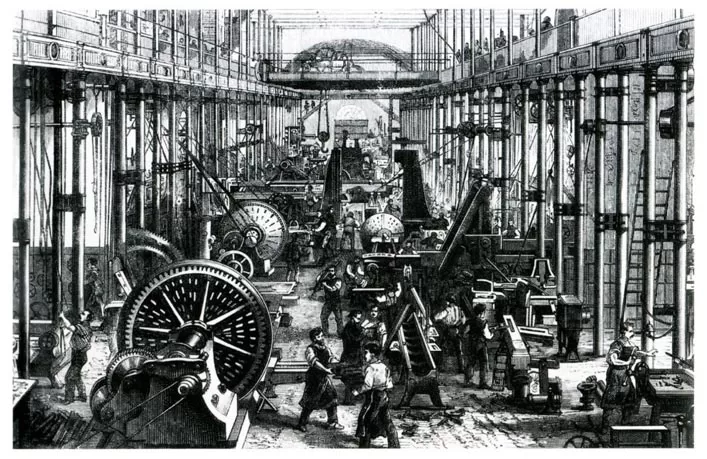
From Class Distinction to Mass Appeal
Victorian fashion was a fascinating dance between rigid social etiquette and evolving ideals. Characterized by refinement, class distinction, and an emphasis on feminine silhouettes, it reflected the societal values and technological advancements of a rapidly changing era.
Before the Victorian Era, fashion was a clear class marker. One could easily tell the upper class from the lower class based on their clothing.
But, as you can imagine, the invention of the sewing machine, as well as other machinery, allowed for mass production of clothing like never seen before. It was during these years that some of the first department stores were opened, and magazines and mail-order catalogs were offered to the public. What once was reserved and available only for the upper class, became widely available and accessible to all social classes. Though the mass-produced clothing might have been made with cheaper materials, everyone could now keep up with the hottest and latest fashion trends of the times.
Shifting Silhouettes and the Pursuit of Teeny Tiny Waists
As a result of this shift within the fashion industry, fashion trends began to change rapidly compared to earlier eras, as everyone began hopping on them and participating in them all at once.
They were constantly creating new designs, refining shapes, and refining the desired silhouette.
This led to the Victorian silhouette being transformed multiple times throughout the decades, but the goal was generally always aimed to achieve a tiny waist. This is where some of our dangerous fashion trends come into play.
You Know What they Say: The Bigger the Hoop…the Smaller the Waist
The “hourglass” figure was very desirable at the time, and was achieved with tight bodices to cinch the waist, and layers of petticoats to create volume.
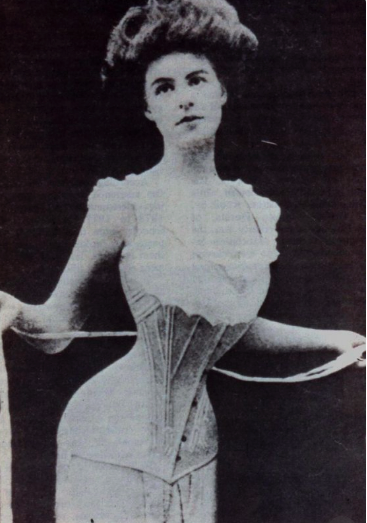
At the time, the more volume you had, the more fashionable you were. So many women would layer as many as 7 petticoats underneath one dress for the most stylish look.
Though it could be uncomfortable and burdensome, women would suffer through it for the sake of looking fashionable. Beauty is pain, am I right?
Luckily, this didn’t last long. In April of 1856: Parisian inventor R.C. Milliet patented the cage crinoline skirt, which completely revolutionized the trend.
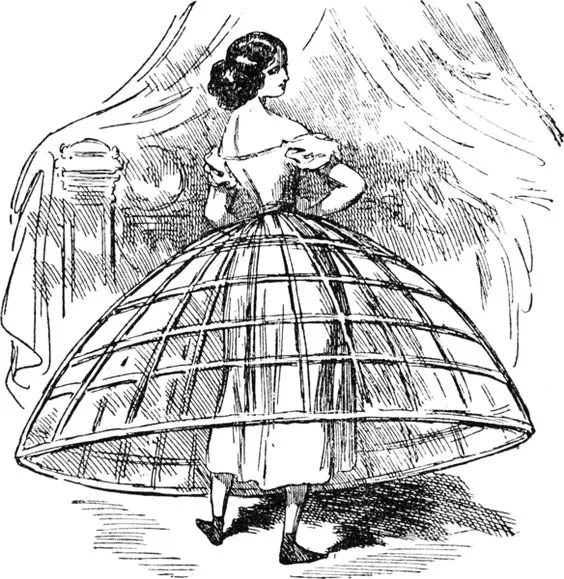
A Death Trap Hiding in Plain Sight
Not only did these cage petticoats create an even more fashionable look, they were so much more comfortable and preferred. Women didn’t have to deal with the thick, heavy, and hot layers of clothing anymore. And because the cage crinolines were so wide and sturdy, women had a good amount of leg room under these skirts. So they were so much more comfortable to wear out and about.
The crinoline skirt was extremely attractive to women. Initially, larger crinolines were associated with wealth and leisure, signifying a life free from manual labor. And of course, they also helped to emphasize that tiny waist that was desirable at the time. So any and every woman who could get their hands on one was wearing a crinoline cage.
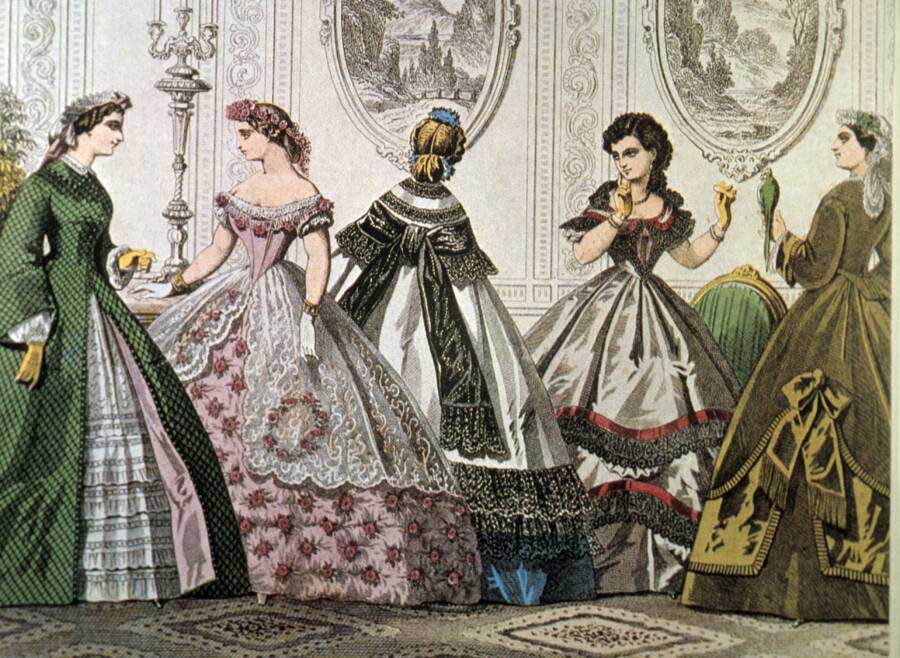
There was only one problem: though these skirts offered a clever solution for women’s comfort without sacrificing style, these skirts were lurking death traps.
In fact, their name was a prophecy of the demise they would cause. The crinoline cage would inevitably become the prison that trapped many who wore them, sending them to their grave.
They Couldn’t Have Been That Bad…Right?
The problem with these giant skirts was that they were made of highly flammable materials. Crafted from cotton and tulle, they were basically walking tinderboxes waiting for a spark. And sparks there were aplenty in gaslit Victorian life. Fireplaces and open fires were the primary sources of heat and candles were used as light sources. All it took was one moment of inattention for a woman to be engulfed in flames.
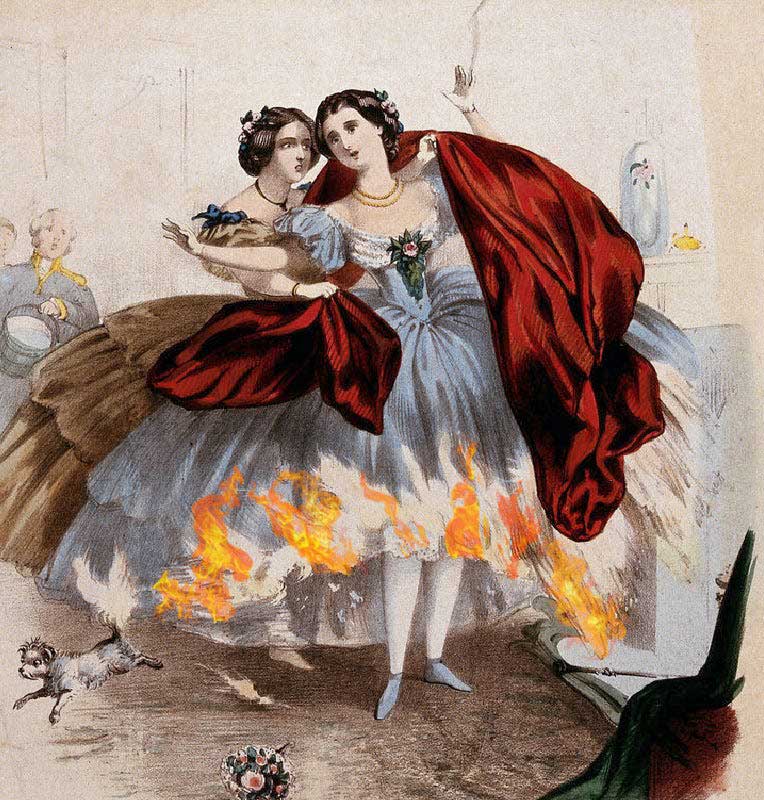
You might be thinking to yourself, it couldn’t have been that bad. That’s what I thought too. But like I was, you would be wrong.
The horror stories are numerous and chilling.

Tragedy Strikes: A Crinoline Cage Skirt Horror Story
One story takes us back to the night of December 8th, 1863, in Santiago, Chile.
That night, in downtown Santiago, there was an event happening at a Jesuit church called “The Church of the Company of Jesus,” where nearly 3,000 people gathered to celebrate the Feast of the Immaculate Conception, the culmination of the Month of Maria, a month-long festival dedicated to Mary, the mother of Jesus.
But what was supposed to be a peaceful night of worship and celebration, turned into a night of true terror, horror, and tragedy.
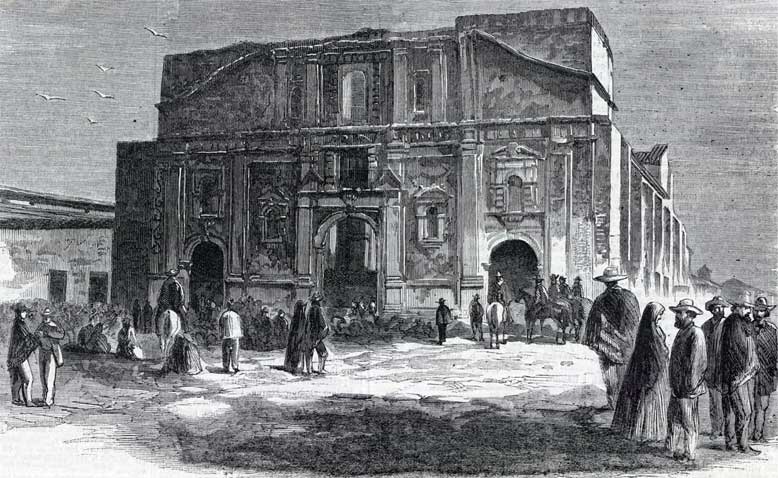
The Tragic Start (and Abrupt End) to a Joyful Celebration
Apparently, this gathering was the final and most important mass of the month. So, to make it even more special, the priest, Don Juan Ugarte, invited all the finest members of society and had the church decorated with thousands of candles and paraffin lamps, draped curtains of muslin and gauze from the ceiling, and adorned all surfaces with ribbons and paper flowers.
At around 7 pm, when the mass was supposed to start, the inward-swinging doors were closed to make more room for the crowd of attendees. Unfortunately, the ceremony came to an abrupt, alarming end, before it could even begin.
The thousands of candles and open flames that were surrounded by flammable decorations proved to be an obvious fire hazard. Not to mention the amount of people in attendance, and the exit doors being closed shut.
There are many accounts as to what exactly first took place, but whether it was a stray spark or a gust of wind, a trail of flames began to cover the building like a giant spiderweb until the building was consumed by fire.
The paper decorations and artificial flowers were quickly devoured and acted as tinder that only assisted and advanced the flames.
The Crinoline Cage Skirt: A Woman’s Prison of Inferno
The majority of the 3000 in attendance that night were women, with most of them wearing the stylish and fashionable crinoline hoop skirts.
Because the skirts were so large, it made it nearly impossible for the women to navigate the building, chairs, and crowds quickly. As the people pushed against one another, women began to trip on their own as well as other women’s skirts, causing them to stumble and fall onto one another, and eventually pile up. The doors that were managed to be opened, were soon blocked by these pile-ups of bodies.
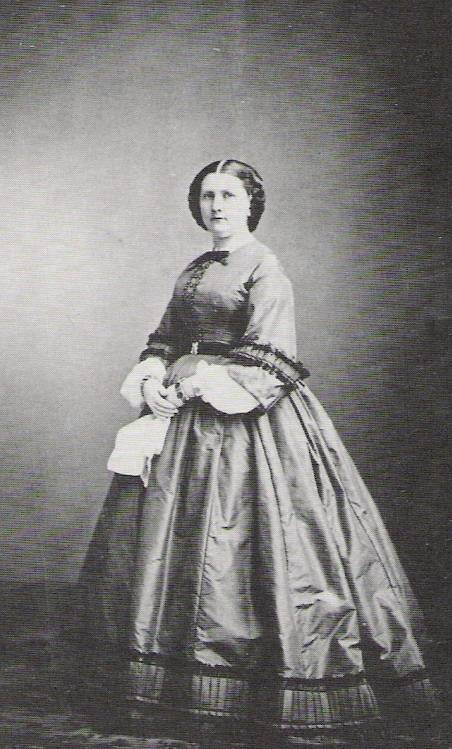
Once that began to happen, the true horror began. As the bodies piled up and the crowds slowed down, the flames rushed on, spreading across the walls and closing in on the building and those in it.
And this is when the crinoline cage lived up to its name. For the women wearing them, these skirts became their prison. Because they were made of such flammable materials, when the flames got close, they were quickly engulfed in their own inferno.
This started what was like a cascade of dominoes, as one crinoline skirt on fire ignited another until hundreds and thousands were up in flames. With the claustrophobic crowds and the piles of bodies blocking the exits, the women couldn’t escape their cages of fire. As the flames moved up their skirts, to their tops, to their hair, and skin.
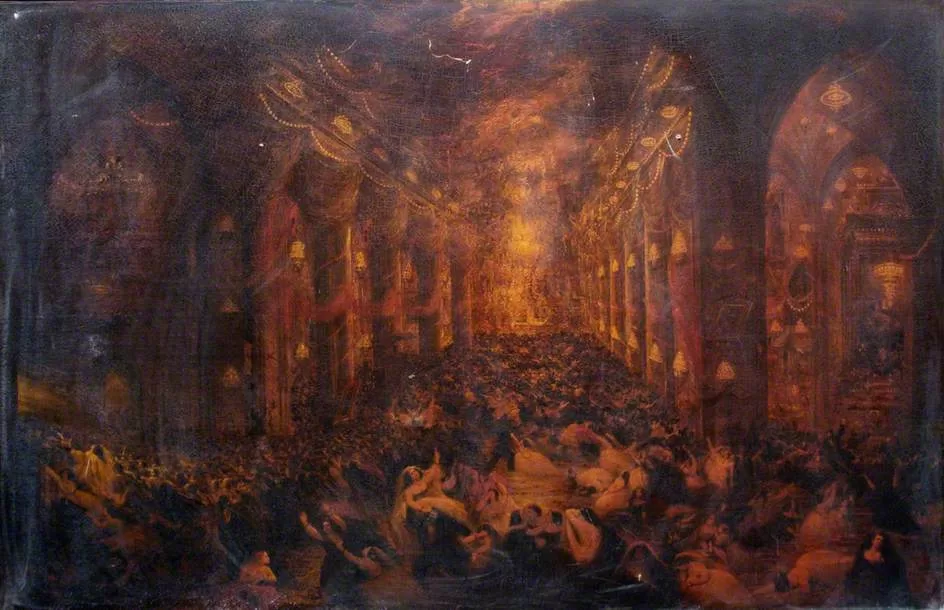
And, unfortunately, in just about an hour, about 2,500 of the 3,000 people in attendance perished.
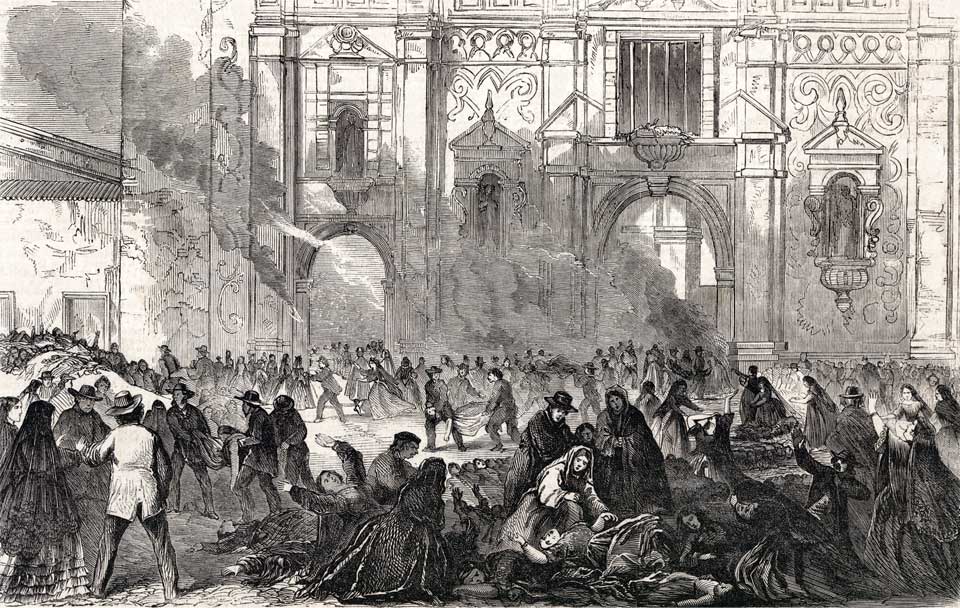
The Tragic Tradeoff: Fashion and Beauty over Safety
Although there were men in attendance, they sat in a separate section from the women, with an iron grating between them. Fortunately for the men, most of them quickly escaped.
So, unfortunately, the great majority of the victims were women.
It’s said that a big reason why so many women perished was because of the lack of mobility caused by the crinoline skirts and the trampling caused by women tripping on their own and the skirts of those around them–causing them to stumble, fall, and get caught by the flames around them.
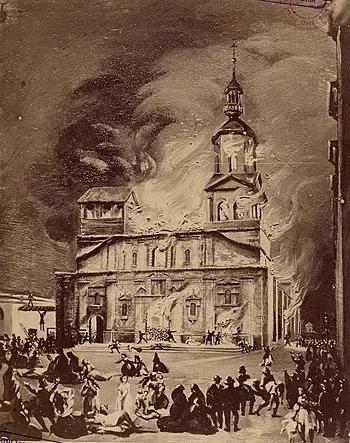
The flammable nature of the skirts was, of course, also heavily to blame. And you would think, at this point in time, wouldn’t they have come up with a safer, non-flammable design if it was so dangerous?
And the answer is that they did. However, the crinoline skirts that were made with non-flammable materials were just not as fashionable.
So despite the hazard and risk of injury and even death, many women opted, of course, for the beauty and fashion that these crinoline skirts offered over comfort and safety.

